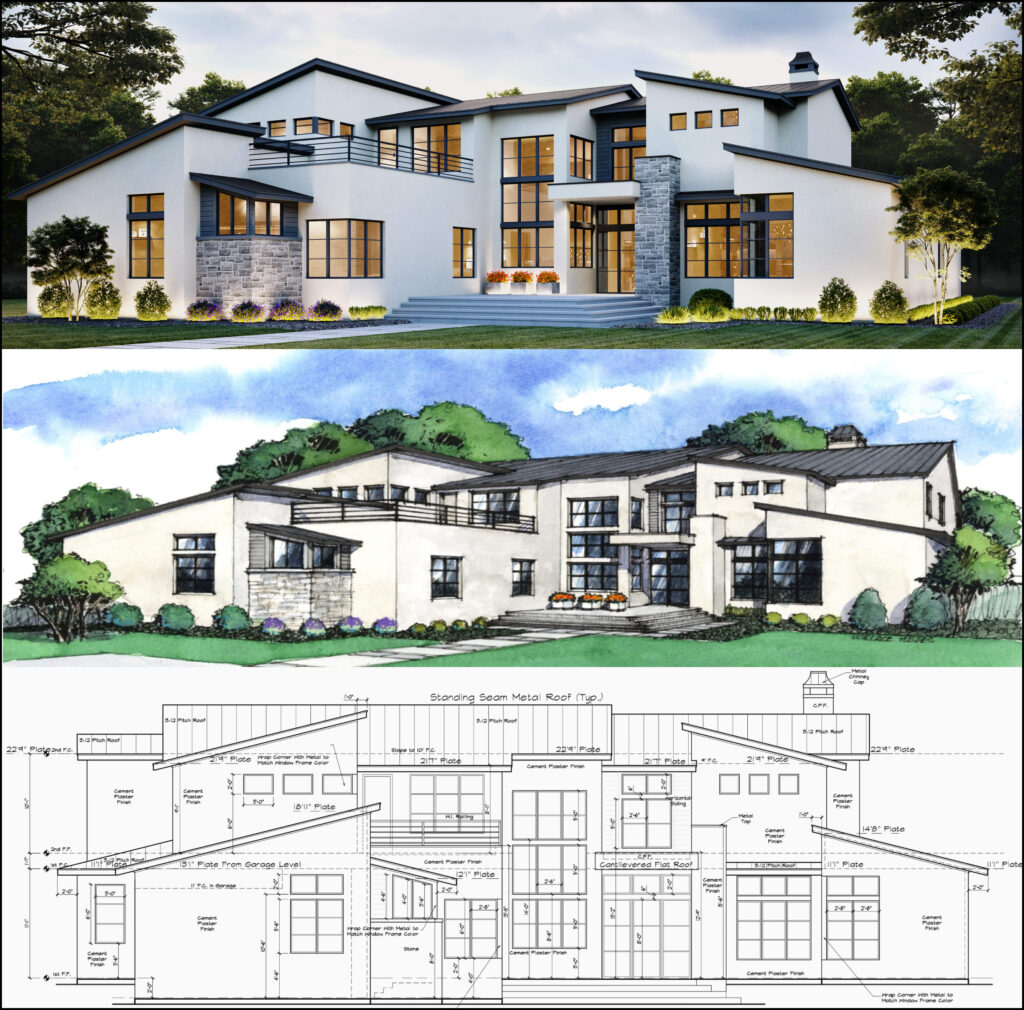Just How CDA Architects Supply Cutting-Edge Solutions for Lasting Style
Just How CDA Architects Supply Cutting-Edge Solutions for Lasting Style
Blog Article
Understanding the Collaborative Process In Between Engineers and Designers in Modern Building And Construction Projects
The collaborative procedure between designers and designers is vital in modern building tasks, as it balances layout intent with engineering expediency. Discovering these dynamics exposes understandings that could substantially impact job end results and overall market criteria.
The Importance of Partnership
The joint harmony between designers and designers is essential for the successful awareness of any kind of construction project. This partnership unites distinct know-how and viewpoints, enabling the integration of ingenious style with sensible design solutions. By collaborating, designers and engineers can make sure that a task not just fulfills visual and useful requirements but also sticks to safety, sustainability, and monetary restrictions.
Partnership promotes a shared vision, helping with the positioning of goals and expectations from the beginning. This positioning is important in attending to prospective difficulties and mitigating dangers that might develop during the project lifecycle. A joint strategy permits for the effective allowance of resources, enhancing both time and cost.
The significance of collaboration includes the repetitive procedure of layout and building, where comments from engineers can notify architectural decisions, leading to even more viable and lasting styles. Conversely, engineers can influence designers to think artistically regarding how to attain structural integrity without endangering creative intent. Ultimately, the joint connection between engineers and engineers is not just helpful; it is fundamental to the production of top notch, practical, and cutting-edge developed environments that satisfy the needs of culture.
Communication Methods and Tools
Reliable communication strategies and tools are essential for fostering cooperation between designers and designers throughout the job lifecycle. Developing clear channels of interaction is important to make certain that all group members are lined up with task objectives, timelines, and duties. Regular meetings, both in-person and digital, provide chances for stakeholders to review progress, address worries, and make educated choices.
Making use of project management software application, such as BIM (Structure Information Modeling) platforms, improves cooperation by making it possible for real-time sharing of design adjustments and technological requirements. These tools promote transparency, permitting architects and engineers to envision changes and assess their influence on the overall task.

Shared Goals and Task Vision

Establishing common objectives involves open discussion and a comprehensive understanding of each technique's contributions. Designers commonly focus on style intent, spatial partnerships, and user experience, while designers stress structural stability, systems capability, and compliance with policies (cda architects). When these point of views are straightened, the result is a cohesive job that sticks to both creative goals and technological usefulness
Furthermore, a well-defined job vision cultivates liability among employee, motivating each individual to take possession of their duty in attaining the wanted outcome. Regular check-ins and collective workshops can additionally strengthen this dedication, permitting for changes to be made as the task evolves. Ultimately, a shared vision not only enhances teamwork but also elevates the quality of the final deliverable, leading to successful project completion.
The Role of Technology
Leveraging modern technology has ended up being crucial in enhancing partnership in between engineers and engineers. Building Info Modeling (BIM) stands out as a crucial technology, allowing both designers and designers to develop thorough 3D models that encapsulate design intent and structural stability.
Moreover, cloud-based systems make it possible for smooth collaboration, allowing project stakeholders to access and update project data from anywhere. This promotes a culture of transparency and responsibility, as modifications can be tracked and evaluated in real-time. Furthermore, mobile applications additional improve communication, supplying on-site teams with instant access to link project specifications and updates.
Arising modern technologies such as expert system and artificial intelligence are additionally starting to contribute in predictive analysis, helping groups identify prospective issues prior to they develop. Ultimately, the duty of technology in architecture-engineering collaboration not just boosts workflow efficiencies however additionally improves technology, bring about even more successful project end results. By accepting these technical developments, engineers and engineers can make certain a more natural and effective collective procedure throughout the building lifecycle.
Case Researches in Successful Partnerships
Countless situation studies highlight the profound influence of efficient partnerships in between architects and designers on project end results. One noteworthy instance is the partnership on the High Line in New York City, where landscape designers, engineers, and metropolitan planners functioned together to transform a deserted rail line right into a dynamic public park. This multidisciplinary strategy not only boosted the aesthetic high quality but likewise ensured structural safety visit the site and security you can try this out and environmental sustainability.
An additional exemplary situation is the layout and building of the Sydney Opera Residence. The partnership in between engineer JÃ ¸ rn Utzon and architectural designer Ove Arup exemplified ingenious analytic. Their collaboration enabled for the legendary shell-like design while attending to intricate engineering difficulties, inevitably leading to an ageless building work of art.
The Burj Khalifa in Dubai further demonstrates the relevance of joint efforts. cda architects. The combination of design and design competence made it possible for the project team to accomplish unmatched elevations while sticking to safety and security regulations and aesthetic vision
These examples underscore the significance of communication, depend on, and shared purposes. In today's intricate construction environment, such partnerships are necessary to navigating difficulties and providing jobs that satisfy both practical and visionary objectives.
Final Thought
In verdict, the partnership between engineers and designers is vital for the success of modern building and construction jobs. Effective interaction methods, a shared task vision, and the combination of advanced modern technologies are important elements that facilitate this collaboration.
Report this page